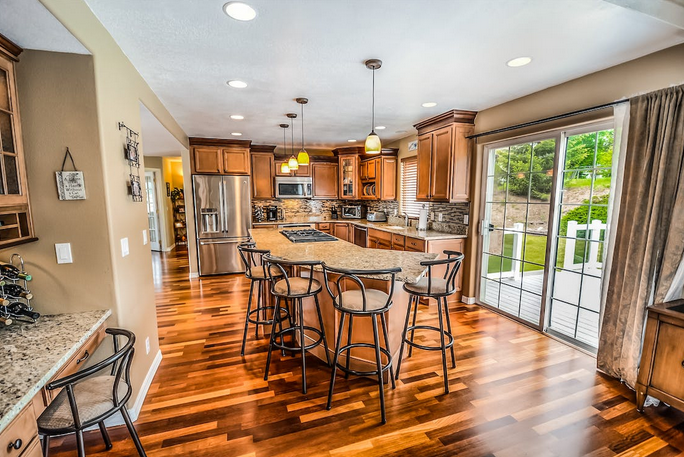Four Different Types of Faux Wood as Smart Alternatives to Real Hardwood Flooring
How long have you been wanting to have hardwood flooring in your home but are worried about the skyrocket-high cost and maintenance that comes with it? Sure, bug-free flooring is a no-brainer if you need to save money. Going for cinnamon for bed bugs might also be one thing you do on a daily basis instead of paying for professional service. But, worry no more. Faux wood flooring is a smart and stylish alternative to real hardwood that will give you such a benefit.
With modern technology improving every day, there are now several types of faux wood flooring options available on the market that closely resemble the look and feel of genuine hardwood without even breaking your budget. In this blog post, we’ll be exploring four different types of faux wood flooring to help you opt for which one suits your needs best.
Laminate
Laminate flooring is, without a doubt, many people’s favorite choice, especially those who want the look of hardwood without the expensive price tag. It’s made by fusing layers of fiberboard together and topping it with a high-quality image of the wood grain. The outer layer, known as the wear layer, protects against scratches, stains, and fading.
The best parts are it’s highly resistant to moisture and wear and tear, such an ideal for high-traffic areas such as hallways or kitchens. Plus, it requires no special maintenance other than regular sweeping or vacuuming. However, some downsides include issues with noise levels when walking on them barefooted due to their hard surface feel compared to real hardwood floors’ softwood surface feel.

Wood-Look Tile
Wood-look tile is a type of faux wood flooring that imitates the natural beauty of hardwood with the durability and ease of maintenance provided by ceramic or porcelain tiles. Unlike traditional hardwood, wood-look tile can withstand moisture, scratches, and daily wear and tear without losing its luster. This type of flooring comes in various size options, from small mosaics to large plank sizes. It also offers an array of colors and finishes to suit different design preferences.
Wood-look tile can mimic the grain patterns found in oak, maple, walnut or even exotic woods like Brazilian cherry. With advancements in manufacturing technology producing more realistic-looking finishes on tiles every day, homeowners no longer have to compromise style for practicality when choosing their home’s flooring material – they can get both with wood-look tile.
Luxury Vinyl
But if you’re more into something with durability and affordability values, you can never go wrong with luxury vinyl. This type is made up of multiple layers, including a core layer for stability and resilience, a printed design layer that mimics the look of wood grain, and a protective top layer for scratch resistance.
Luxury vinyl planks are usually thicker than regular vinyl flooring, providing greater durability. They also have an interlocking system similar to laminate flooring, making it easy to install without needing professional help. In fact, this type of flooring is easy to clean since they don’t require waxing or refinishing like traditional hardwood floors do.
Engineered Hardwood
 What if you desire the look and feel of real hardwood without suffering from that high cost? Engineered hardwood is perfect for you as it’s made up of layers of plywood or high-density fiberboard, with a top layer that looks like real wood. If you’re in an area with super high humidity levels, you’ll be lucky to install these floors as the multiple layers make it more resistant to moisture and temperature changes, which usually cause natural wood to warp or twist over time. This flooring can be sanded down and then refinished, just like solid hardwood floors.
What if you desire the look and feel of real hardwood without suffering from that high cost? Engineered hardwood is perfect for you as it’s made up of layers of plywood or high-density fiberboard, with a top layer that looks like real wood. If you’re in an area with super high humidity levels, you’ll be lucky to install these floors as the multiple layers make it more resistant to moisture and temperature changes, which usually cause natural wood to warp or twist over time. This flooring can be sanded down and then refinished, just like solid hardwood floors.
So what do you think? Don’t you think these flooring options are such great alternatives to real hardwood floors? But now, which one should you choose? It’s actually up to you to decide. But when you do, don’t forget to think of …

